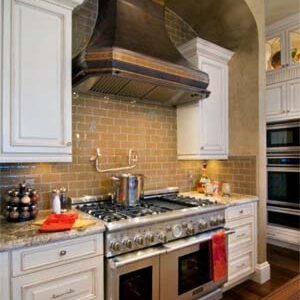Are you looking for a new range hood? In making your decision, you probably consider size, performance, quality, and appearance. Have you considered the noise level of your new appliance? The sound level of a range hood can vary. The Sones noise rating measures the amount of noise produced by a range hood.
This article explains what a Sones noise rating is, why it matters, and how it is influenced. As a result, you can get the best range hood for your kitchen for the most comfortable cooking experience.

How Sones Ratings are Defined
Sones are units of sound or loudness. In addition to kitchen fans, bathroom fans, and range hood fans, sones measure noise. A sone is about 1,000 Hz with a sound level about 40 decibels above a normal reference level. A sound that delivers over four sones is about four times louder than the normal reference level. It’s important to note, however, that two sones do not equal 80 decibels. There is no linear increase in decibels. Rather, they follow a curve that gradually flattens out.
To convert sones to decibels, use the following formula:
dB = 33.2*log10(Sones) + 28
In order to convert one sone to decibels, follow these steps:
dB = 33.2*log10(1) + 28 = 28 dB
Converting decibels to sones is as follows:
Sones = 10((db-28)/33.2)
Don’t feel like breaking out your high school math skills? To give you a sense of scale:
- One sone: the hum of a refrigerator
- Two sones: an office or other professional setting that is quiet
- Three sones: a comfortable volume on the TVa comfortable volume on the TV
- Four sones: two people conversing
- Five sones: a more active and louder conversation
- Six sones: restaurants with a quieter atmosphere
- Seven sones: a light flow of traffic
- Eight sones: average traffic noise
- Nine to ten sones: the sound of congested traffic
Sones Rating Factors
How does one range hood sound louder than another? Several factors influence range hood noise levels.
Factor 1: The Type Of Duct
A major factor is the type of installation of air ducts. It is important to consider whether you are using flexible or rigid ducts. The operation of flexible ducts is quieter. Similarly, range hoods installed under cabinets perform the same function. As a noise barrier, the duct is hidden inside the cabinet.
Check the type of installation and if it works with your kitchen. A range hood’s performance and noise level can be affected if it is installed incorrectly. To ensure proper venting, have the appliance professionally installed.
Factor 2: Appliance Size
Range hood noise levels are also affected by the size of the appliance. Generally, range hoods with larger motors produce more noise and have stronger suction power. Before purchasing a range hood, check its sones level. The appliance should have a multi-speed setting so you can easily control the noise level and power level.
The larger the motor of your range hood, the louder it will be. Ensure the sones level is within your desired range. Alternatively, you can choose a range hood with an external motor. To minimize noise, this system is installed on the roof or in the attic.
Factor 3: Duct Size
Range hood noise can also be affected by ducts. Ducts are generally quieter when they are larger in size. Larger exhaust openings reduce the noise generated by air inside the range hood and air exiting the house
What Is The Importance Of Sones Ratings?
Every once in a while, we all enjoy some peace and quiet. Unnecessary stress can be caused by high levels of noise. You can feel stressed even in a noisy home.
Sones noise ratings can help you find the right range hood for your cooking needs and comfort level. It is important to keep in mind that range hoods with larger motors and suction power will make more noise. As a result, they are very effective at quickly removing grease, fumes, and odors.
